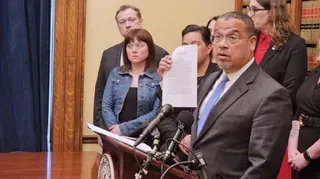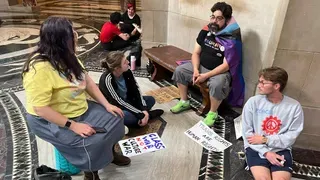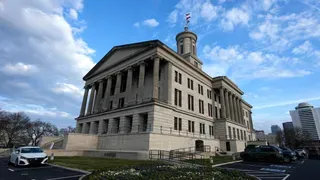March 26, 2015
NY Legislators Seek More HIV, AIDS Program Funding
EDGE READ TIME: 2 MIN.
In a letter to Assembly Speaker Carl Heastie and Senate Majority Leader Dean Skelos, more than 30 members of the Black, Puerto Rican, Latino and Asian Legislative Caucus -- and other lawmakers -- urge legislative leaders to increase funding for HIV and AIDS programs.
The Times Union's Matthew Hamilton reports that Gov. Andrew Cuomo has allotted $10 million in his budget for his End the Epidemic initiative. He also has earmarked a small amount of nearly $440 million in JP Morgan mortgage settlement funds for rental assistance for HIV and AIDS patients.
But legislators say more is needed to address the deadly disease statewide and to stop its spread in minority communities.
"Arguably, nowhere is the impact more pervasive than in communities of color," the lawmakers wrote. They said that they want "more substantial resources," but don't ask for a specific dollar amount. "Every statistical measure has shown that race is a significant factor in calculating risk for contracting HIV, and the disparity has only widened over time," the letter says.
A state Department of Health study released last year showed that there were 55,546 members of the Black community statewide living with HIV or AIDS as of December 2012. The number for the Hispanic community was 42,287. The white community had 27,497 cases.
A majority of New Yorkers living with HIV or AIDS reside in New York City. In Albany County, there were 1,020 HIV and AIDS cases, excluding the prison population. Rensselaer County had 240 cases, Schenectady County had 380 cases and Saratoga County had 169 cases, bringing the four-county total to 1,809.
Newly diagnosed HIV cases statewide fell to 3,316 in 2012 from 5,666 in 2000, the earliest recorded date in the study. New AIDS cases across New York decreased from a high of 14,636 in 1993 to 2,370 in 2012.
The decline was highlighted by Cuomo last year when he announced plans for his End the Epidemic initiative, which included assisting undiagnosed HIV patients find health care, getting patients on anti-HIV therapy and providing high-risk people with HIV prevention drugs.
"Thirty years ago, New York was the epicenter of the AIDS crisis," Cuomo said at the time. "Today I am proud to announce that we are in a position to be the first state in the nation committed to ending this epidemic."
The governor set a goal of limiting new HIV infections to no more than 750 by 2020.
Cuomo's End the Epidemic Task Force is waiting for him to accept a series of recommendations that include providing housing assistance for some HIV and AIDS patients and the passage of a bill that would prohibit discrimination against transgender New Yorkers.
The lawmakers' letter said that fully implementing the task force's plan would lead to averting 10,851 new HIV infections and save the state nearly $4 billion in public health spending.
"Other states, and we've gotten inquiries from other parts of the world, are looking to us to say, 'Can you share this plan?'" said Perry Junjulas, executive director of the Albany Damien Center and a task force member. "It's really where New York has an opportunity, as the state that is most impacted by HIV in the United States, to really be a leader in ending this epidemic."





